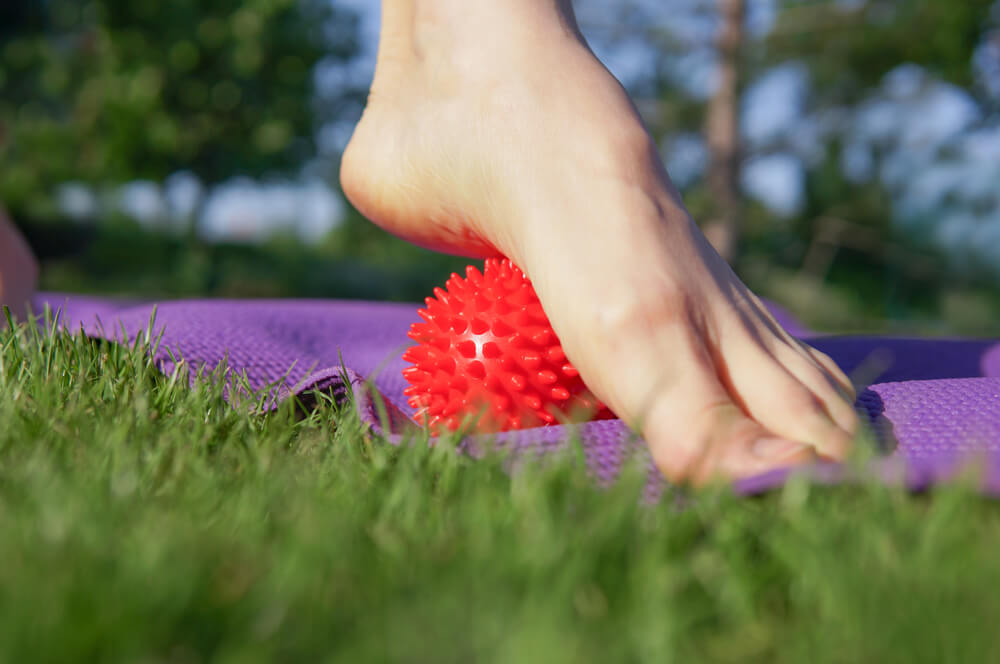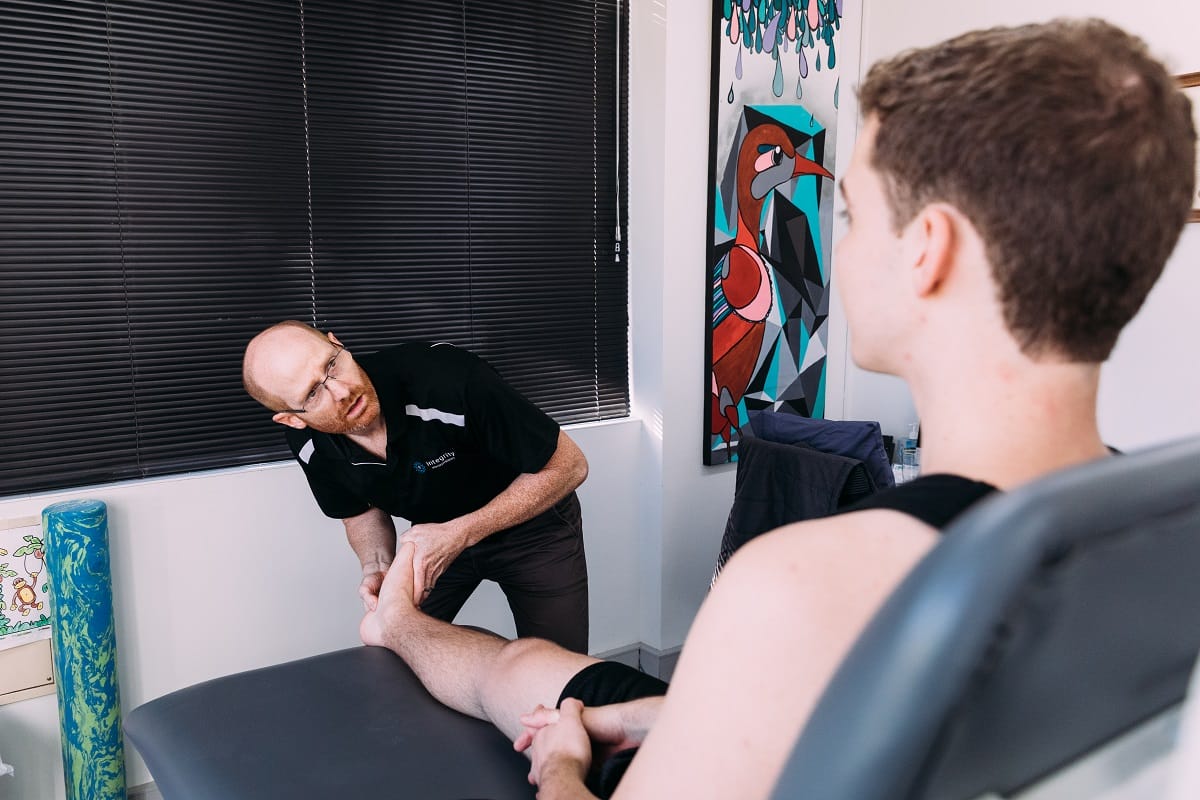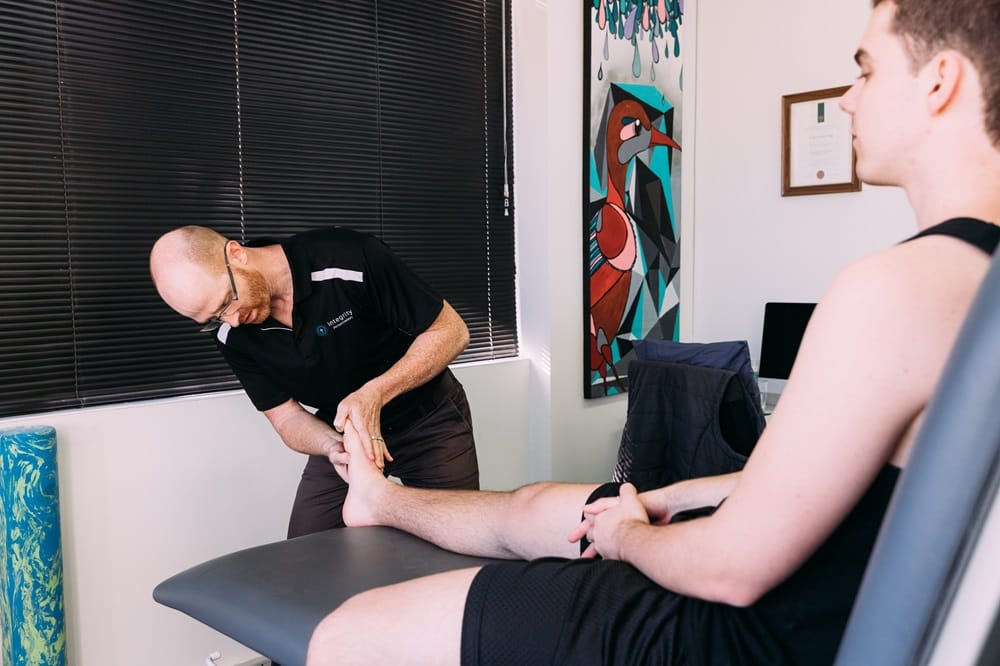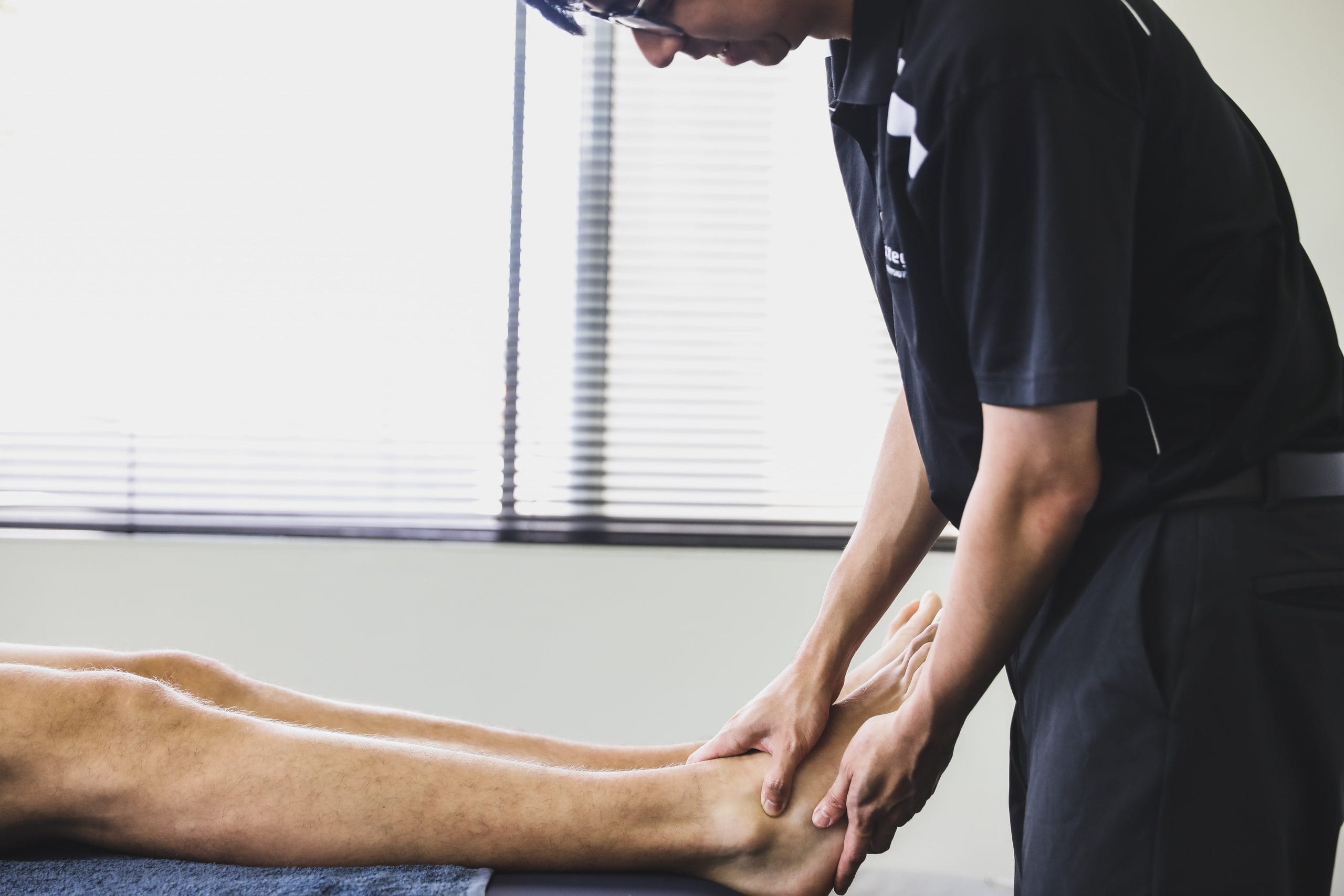
Long days spent standing or lengthy periods of exercise can leave your feet feeling tight and sore. Here are a few of our top spikey ball techniques to relieve common foot pain. ?
Whether you’re playing sport regularly, or in a job that keeps you on your toes (literally), it’s good to know some techniques that can relieve pain and get you back on your feet without developing any long term or lasting symptoms. As always, seeing a qualified physio in Como is the most effective way to get the root of the problem and set out an appropriate treatment plan.
Before we get into the exercises – here’s some background on how and why our feet are so prone to injury.
Tightness Of The Arch (Plantar Fasciitis) And Its Causes
Pain in the bottom of your foot, especially in the arch, is one of the most common musculoskeletal conditions around. It’s no surprise too, given how much pressure is put on this particular muscle throughout the day and over our lifetimes. With our entire body weight on top of this particular region, wear and tear or irritation of the plantar fascia ligament is caused by excess strain and bruising. Some common causes are:
- Being overweight or carrying heavy loads on a daily basis. This increases stress on the ligament causing inflammation and pain.
- Wearing the wrong shoes for the task or wearing old shoes. This can cause unwanted pressure on your plantar fascia.
- Over-exercising or playing sport without properly warming up beforehand is a typical cause and is seen often in professional runners.
What Are The Symptoms?
While pain in the foot arch can often be temporary and often go away with time, plantar fasciitis is more common in the longer term and chronic sufferers. Symptoms of plantar fasciitis are nonetheless similar to those of typical foot arch pain and among the most common are:
- Stabbing pain in and around the foot – this usually flares up during your first steps in the morning
- Inflammation especially around your foot arch
- Over time, a limp may develop as your body tries to compensate
Preventing Foot Arch Pain
While foot arch pain can develop often randomly and appear to creep up slowly, there are ways to prevent the worst symptoms from becoming a more chronic condition – like plantar fasciitis. Here are some simple prevention techniques that you can observe along with completing the exercises below:
- Keep your foot arches supported and relaxed – as a rule of thumb, keep your feet well supported during exercise by wearing the right shoes. This will minimise unwanted pressure on your ligaments
- Remain at a healthy body weight – and reduce loads wherever possible – excess weight can have adverse health effects including extra strain on your plantar fascia
- If you’ve spent a long day on your feet – try to relax and take the pressure off your feet by lying down with your feet up or using a foot spa. Over the day a good tip is to remember to take breaks in between long periods of standing or heavy lifting
- Avoid going barefoot on hard surfaces – this can have adverse effects on your ligaments and further damage/irritate your arch
Benefits Of A Spikey Foot Massage Ball For Plantar Fasciitis
There are a great number of benefits from using a spikey ball – especially when you find yourself on your feet for long hours either at work or on the field. These hard and spiky balls are excellent at massaging. The small spikes improve blood flow, reduce pain, and calm inflammation. There is also evidence that spikey ball exercises can improve mobility, and lower recovery times after intense workouts.
Spikey Ball Exercises That Combat Plantar Fasciitis
Developing an easy and simple exercise routine that combats plantar fasciitis is key to warding off symptoms and getting back to your normal routine. Without further ado, here’s how to use a spiky massage ball for that much-needed relief.
Exercise 1: Centre Foot
- In a seated position, place the spiky ball beneath your foot, keeping it central
- Move the ball back and forth, from one end to another, cover the whole length of the foot
- To apply increased pressure use your forearm on your knee to apply added pressure to your foot on the ball.
Exercise 2: The Ball Of The Foot
- Move the ball to just behind the inside of the ball of your foot
- The ball should be sitting just at the base of your big toe
- Massage this area with small and controlled rotations or go back and forth
- Lighter pressure may be needed in this area
Exercise 3: Front Of The Heel
- Move the ball back to the inside of the arch
- Massage the ball with controlled circular motions to hit the inside of the foot arch
If pain persists, please consult a health professional. If you develop more severe symptoms- don’t leave them untreated it’s important to get an expert opinion.
Spiky Ball Technique Hasn’t Worked? Get In Touch With A Qualified Physiotherapist
Leaving symptoms unchecked may result in long-term issues and exacerbated conditions that can take weeks or months to recover. Our experienced physiotherapists are trained in plantar fasciitis treatment, so please don’t hesitate to make a booking and get a professional opinion.




